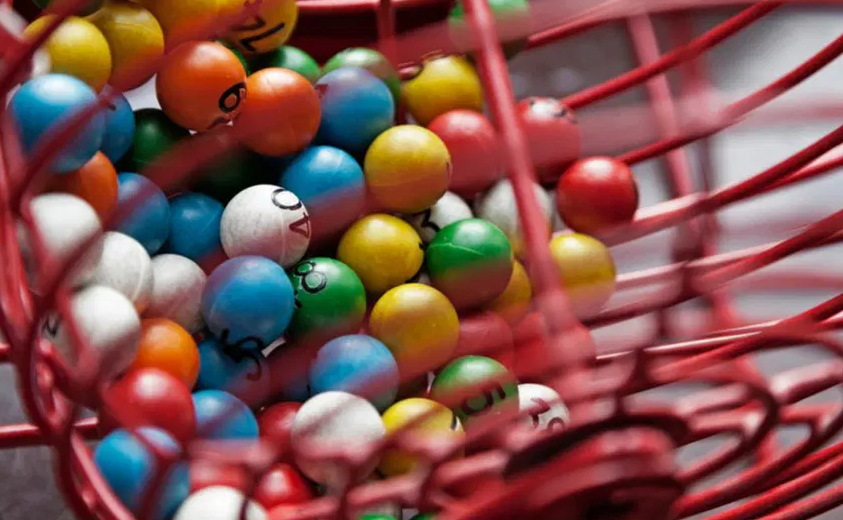Americans call Bingo a popular game of chance, where players match printed numbers on cards with those drawn randomly by a caller.
Introduction to Bingo in the United States
Bingo, a game of chance that involves matching numbers on a card with those called out, holds a special place in American culture. This game, often associated with family gatherings, fundraisers, and social events, thrives across the United States. People of all ages enjoy the thrill of shouting “Bingo!” upon completing a pattern on their card.
Terminology: The American Bingo Lexicon
In American bingo, specific terms are unique to the game. For instance, “Coverall” or “Blackout” refers to a game where the goal is to cover all numbers on the bingo card. Each column on the bingo card is often denoted by the letters B-I-N-G-O, where each letter corresponds to a range of numbers. This categorization simplifies number identification during the game.

Variations of Bingo in America
Traditional Bingo
Traditional bingo, a staple in American social events, often uses 75-ball bingo cards. Players mark off numbers on a 5×5 grid, aiming to complete a row, column, diagonal, or a specific pattern. This version of bingo is renowned for its simplicity and the communal atmosphere it creates.
Modern Bingo Variants
Modern variants of bingo incorporate technology and novel themes. From electronic bingo, where players use touchscreens instead of physical cards, to themed bingo nights that cater to specific interests, these variants add a contemporary twist to the traditional game.
Cultural Significance of Bingo in America
Bingo transcends mere entertainment in the U.S., often acting as a social glue that brings communities together. It’s a game that encourages interaction, often forming a part of church fundraisers, school events, and community gatherings. The social aspect of bingo, where players converse and bond over the game, is a key factor in its enduring popularity.
Comparison with Bingo in Other Countries
When comparing American bingo with its international counterparts, the differences are noticeable. For example, the UK version typically uses 90 balls and has different winning patterns. This comparison highlights how bingo, while a global game, adapts to cultural nuances and preferences.
History of Bingo in America
Early Beginnings and Evolution
The game of bingo in America traces its roots back to the early 20th century. Initially introduced as “Beano,” the game underwent a transformation in both name and format. The early versions of bingo used beans to mark numbers and were primarily a carnival game. Edwin S. Lowe, a toy salesman, recognized the potential of this game and played a pivotal role in popularizing it under the name “Bingo” in the 1920s. This transition marked a significant shift in the game’s perception and accessibility.
Bingo and American Social Gatherings
Bingo quickly became a popular pastime at social gatherings in America. During the mid-20th century, it found its way into church halls and community centers. This game served as an effective way to bring people together, fostering a sense of community and camaraderie. Churches and non-profit organizations often organized bingo nights to raise funds, making it a philanthropic activity as well. The cost of setting up a bingo game is relatively low, with basic supplies including cards, markers, and a number-calling system. The affordability and ease of organizing bingo events make it a go-to choice for many community leaders.
The Role of Bingo in American Charity Events
Bingo has played a significant role in American charity events. The game’s appeal lies in its simplicity and the excitement it generates, making it a popular choice for fundraising. The cost to participate in a bingo game is typically modest, usually ranging from $1 to $5 per card, making it accessible to a wide audience. The proceeds from these games often go towards supporting various causes, from local community projects to national charities. The effectiveness of bingo in fundraising can be attributed to its wide appeal and the communal atmosphere it fosters, encouraging participants to contribute to a good cause while enjoying themselves.

Playing Bingo in America
Rules and Gameplay
In the United States, the standard bingo game utilizes a 5×5 grid with a free space in the center. The columns are labeled B-I-N-G-O, each representing a range of numbers: B (1-15), I (16-30), N (31-45), G (46-60), and O (61-75). The caller draws numbers randomly, and players mark their cards if the called number appears on their grid. The first player to complete a predetermined pattern (like a straight line, diagonal, or full house) and shout “Bingo!” wins. The simplicity of these rules contributes significantly to the game’s widespread popularity.
Popular Bingo Halls and Locations
Bingo halls in America are more than just venues; they are social hubs. Some of the most famous bingo halls can accommodate hundreds of players at a time. For instance, Foxwoods in Connecticut and Turning Stone in New York are renowned for their massive bingo halls. The cost of playing bingo in these locations varies, typically ranging from $10 to $30 per session, depending on the day and the type of game.
Online Bingo Trends in the USA
The advent of digital technology has ushered in the era of online bingo. In recent years, the popularity of online bingo has surged, offering players the convenience of playing from home. The online platforms often feature a variety of bingo games, including 75-ball, 80-ball, and 90-ball bingo. The cost of online bingo cards can be as low as $0.05, making it accessible to a wide range of players. Furthermore, online bingo sites often offer bonuses and promotions, enhancing the overall gaming experience.
The game of bingo in America, with its straightforward rules, diverse playing locations, and adaptation to digital platforms, continues to be a beloved pastime. It not only offers entertainment but also provides an avenue for social interaction and community building, both in physical halls and virtual rooms.

Bingo and American Language
Bingo Lingo and Slang
For example, “B-12” often prompts jokes about vitamins, while “O-69” is met with laughter for its innuendo. This special vocabulary not only makes the game more entertaining but also fosters a sense of belonging among players. These terms and phrases are a crucial part of the bingo culture, adding personality and humor to the game.
Bingo Callouts: A Linguistic Perspective
The tradition of using catchy phrases for bingo callouts contributes to the game’s charm. Phrases like “Two Little Ducks” for 22 or “Unlucky for Some” for number 13 are not just random; they reflect cultural references and collective humor. These callouts vary regionally, providing a linguistic map of cultural and dialectical differences across the United States. The creativity and wit in these callouts make bingo more than a game—it becomes a linguistic journey.
Influence of Bingo on American Vernacular
The influence of bingo on American vernacular extends beyond the game itself. This integration of bingo terms into common speech illustrates the game’s significant cultural impact in America. It highlights how a simple game can transcend its boundaries and become part of the linguistic fabric of a society.
In summary, the language of bingo in America is a fascinating blend of humor, culture, and community. It reflects the game’s ability to bring people together, creating a shared experience that resonates both within and outside the bingo halls.
For an in-depth look at the unique language and terminology used in bingo, including its impact on American culture, the Bingo Lingo Wikipedia page provides a comprehensive overview.